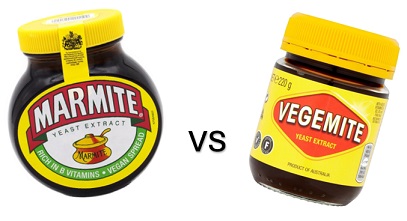Vegemite and Marmite are both iconic yeast extract based spreads, while they may look the same, they do have distinct differences and histories that set them apart.
Texture and Color: Vegemite, developed in Australia, is a thick black paste with a dense, peanut butter-like consistency, making it more intense in flavor and texture. In contrast, Marmite, a British favorite, has a burnt-brown, sticky appearance that’s closer to molasses in consistency.
Flavor Profile: Vegemite is saltier and more bitter, packing a strong umami punch with a slight bitterness. Marmite, however, is milder, with a subtle sweetness that can make it more approachable for new tasters. This difference can mean that a thin layer of Marmite is often spread on toast, while Vegemite enthusiasts typically use an even thinner layer due to its strong taste.
Nutritional Content: Both spreads are rich in B vitamins, but there are variations in the specific nutrients. Marmite includes vitamin B12, a boost for those looking for a vegan source of this vitamin, whereas Vegemite has a higher concentration of other B vitamins but includes B12 only in its reduced-salt version. The sodium levels are also slightly higher in Vegemite.
Origins and Popularity:
Marmite, invented in England in 1902, was initially a byproduct of beer brewing. It’s popular throughout the UK and New Zealand and has a fan base in other Commonwealth countries.
Vegemite, created in Australia in 1923, grew as an alternative to Marmite during World War I when Marmite imports were limited. Through marketing and endorsements from health professionals, Vegemite became a staple in Australian households and remains strongly associated with Australian culture.
Both spreads can be used in a variety of ways beyond toast, such as adding depth to stews, pasta, and savory bakes. Marmite and Vegemite may look alike, but for loyal fans, each spread stands in a league of its own and is a real cult love it or hate it type of taste.
